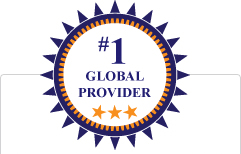...
How would you like to be a Guest Blogger for KMI? Email us at: info@kminstitute.org and let us know your topic(s)!
What is Meant by Knowledge Management?
Knowledge Management is becoming more important as organizations continue to grow and face numerous challenges. As Wiig stated, “Competitiveness in the new world is directly dependent not only on the value and sophistication of the knowledge assets but also on how well they are renewed and utilized to conduct competent work” (Wiig 1999). Recently, the board of directors of the African Development Bank Group (ADBG) approved their Knowledge Management strategy, declaring that “knowledge and innovation have emerged as crucial features of development strategies in many parts of the world”.
Knowledge management does not only allow organizations to become smarter and in turn generate higher levels of competency, but it also reduces the cost of losing critical knowledge when talent walks out the door. According to Zenworkplace.com, companies can spend as much as $250,000 per 12 employees that leave the company. The costs are associated with training, lowered productivity, recruitment, but above all things, replacing critical knowledge. “It’s not just about putting numbers in a spreadsheet, writing code, or selling a product. It’s about knowing the people, the traditions, the location of relevant information, what the boss likes and a million other things that come from working for a company for a long period of time. All that goes away when someone quits.” (Lucas, S. 2014).

(credits: dilbert.com)
The key element in knowledge management is critical knowledge. This knowledge is derived from analyzing a series of elements related to the organization´s strategy such as its value preposition, market segments, new product development, balanced scorecard and any other relevant information which the organization applies in order to steer forward it´s strategy. This statement is also supported by Wharton management professor Martin Ihrig: “When you look at knowledge management [historically], there was a tendency to try to capture all the knowledge in an organization. First of all, this is not possible. It’s really hard to capture all the tacit experience and put it into a computer system. But even if it were possible, you’d suffer cognitive overload because it’s just too much. So what we propose is [to] really focus on the knowledge assets that are critical for success and underpin performance. Those critical knowledge assets should be mapped so that the management can decide how to further develop [them] to create growth and competitive advantage”
From the above we can declare that knowledge management deals with the identification and development of critical knowledge. This entails nurturing a knowledge driven culture as people are at the center of the strategy. Although technology is becoming more relevant in terms of connectivy, co-creation and collaboration (also known as the three C´s thrusting forward the new generation of knowledge management), we need to bear in mind that technology is not the core solution. As I mentioned in a recent post (Knowledge Management and the Sharepoint Era), Knowledge management effectiveness won´t be measured for the quality of the platform; it will be measured by how much it has impacted in the organization´s results. You need to design the strategy, carried to the point of identifying and developing the organization´s critical and strategic knowledge. This goal requires creativity, deals with complex issues and requires coordination among many functions in the organization.
© Jose Carlos Tenorio Favero
 Meet Jose' Carlos Tenorio Favero (@josecarloskm):
Meet Jose' Carlos Tenorio Favero (@josecarloskm):
“I love what I do. I am currently in charge of Knowledge Management in GMD S.A., a leading IT outsourcing services organization (Graña & Montero Group) based in Lima, Peru. Working in the corporation has been a outstanding experience since I have been able to put my knowledge in practice in diverse sectors such as engineering, mining, oil and gas, infrastructure and environment. Leading KM is not just about technology, as some think, first you need to discover opportunities and challenges must be reviewed. You need to be able to properly identify strategic knowledge in order to prioritize efforts and budget. Then there’s the culture and change management part. Bringing people together, reducing silos and promoting communities of practice are just another part of the challenge! I also love to teach, write and collaborate with others.” Follow Jose' at: http://globalknowledgemanagement.org
Archives
- March 2020 (1)
- February 2020 (1)
- January 2020 (1)
- December 2019 (1)
- October 2019 (1)
- August 2019 (1)
- July 2019 (2)
- June 2019 (1)
- May 2019 (2)
- April 2019 (1)
Pages
RECENT POSTS
...












 ...
...
